Workplace accidents can cause numerous types of physical harm. Neck injuries are among the most common types of car accident injuries, especially in rear-end crashes. However, other accidents can also cause neck injuries, including construction accidents, slips and falls, and boating accidents. The bones and soft tissues in the neck can become damaged due to an accident. You might experience soreness and stiffness, limiting your range of motion and activities. Severe neck injuries could result in long-term impairments and chronic pain. A common neck injury caused by accidents is herniated discs at C4/C5 or C5/C6. Our Bronx personal injury attorneys discuss the causes of herniated discs and the damages you could receive in a personal injury claim.
What Is a Herniated Disc at C4/C5 or C5/C6?
The spinal cord is surrounded by a column of bones called vertebrae. These bones protect the spinal cord and provide stability and structure for your body. The spinal column runs from the base of the skull to the coccyx. The first seven vertebrae (C1 to C7) in the spinal column make up the cervical spine in the neck. Between each vertebra is an intervertebral disc. It is like a soft sponge that provides cushioning between the bones in the spine. The intervertebral disc is made up of a jelly-like center called the nucleus pulposus. The outside is a tougher material called the annulus fibrosus, which holds the jelly-like inner core in place. During an accident, the disc can be forced out of place. This injury is often called a slipped disc because it “slips” out of place. An accident can also cause damage to the disc, causing a rip or tear in the outer shell. The jelly-like inner core can seep from the disc into the spinal column when this happens. This injury is often called a ruptured disc. A herniated disc can cause severe pain. Slipped discs can pinch nerves in the spinal column, causing pain. If the inner portion of a ruptured disc comes into contact with nerves, it can also cause pain. A herniated disc can occur at any point along the spinal column. However, a common location for herniated discs in the cervical spine is between the C4/C5 or C5/C6 vertebrae.

Common Symptoms of a Herniated Cervical Disc at C4/C5 or C5/C6
A herniated disc can cause debilitating symptoms. The symptoms could last for days or weeks after an accident. Sometimes, the injury is so severe that the victim could experience long-term effects from a herniated disc. Symptoms of a herniated disc at C4/C5 or C5/C6 include, but are not limited to:
- Muscle weakness
- Chronic neck pain
- Burning or tingling sensation
- Incontinence
- Numbness in the affected area
- Pain extended down the back and arms
The location and severity of the herniated disc impact the type of symptoms a person might experience. For instance, a herniated disc at the C4-C5 vertebrae can cause symptoms in the neck and arms, especially numbness and tingling. The sensation might move to the shoulders, where you might notice a weakness in the deltoid muscle. However, a herniated disc between the C5-C6 vertebrae often results in symptoms in the hands, wrists, and forearms, in addition to numbness and tingling in the neck. The weakness might also appear in the bicep muscles of the upper arms.
How Are Herniated Discs Diagnosed and Treated After an Accident?
Doctors review a patient’s symptoms to make a preliminary analysis of what could be wrong. X-rays are not effective in diagnosing herniated discs. Therefore, depending on the symptoms, the doctor might order other imaging tests, such as a CT scan, MRI, myelography, electromyography, and/or discography. The treatment plan for a herniated disc depends on the location of the herniated disc and the severity of the symptoms. A doctor might prescribe over-the-counter pain medications and rest. The doctor might also recommend physical therapy. If the symptoms of a herniated disc continue, a doctor might prescribe prescription medications, including NSAIDs, muscle relaxers, and pain medicine. In severe cases, a physician might recommend surgery to repair the disc.

Can I Receive Damages for a Herniated Disc at C4/C5 or C5/C6?
If another party caused the accident that resulted in a C4/C5 or C5/C6 herniated disc, you can file a personal injury claim seeking compensation for your damages. Damages can include economic and non-economic losses, such as:
- Medical bills
- Physical therapy
- Pain and suffering
- Emotional distress
- Lost wages
- Permanent impairments and disabilities
- Out-of-pocket expenses
- Decrease in earning capacity
- Diminished quality of life
If your accident happened on the job, you are likely entitled to workers’ comp benefits for your medical expenses and lost wages. The time to file a claim for damages caused by a C4/C5 or C5/C6 herniated disc is limited by the New York statute of limitations. Claims for workers’ compensation also have strict deadlines. Contact A Bronx personal injury lawyer as soon as possible to avoid missing the filing deadline and losing your right to pursue a claim.
Why don’t you?Free Case Consultation
Contact the Bronx Workplace Accident Lawyers at O’Connor Law PLLC Today
If you were injured in a workplace accident in Bronx, NY, and need legal help, contact our Bronx workplace accident attorneys at O’Connor Law PLLC to schedule a free case consultation today.





